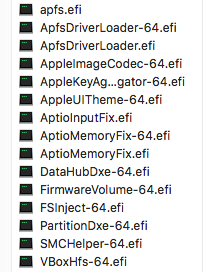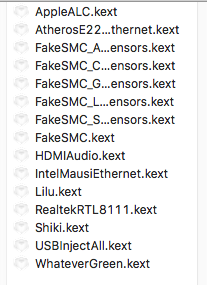*** Panic Report ***
panic(cpu 7 caller 0xffffff8004d8776f): Kernel trap at 0xffffff7f854a5a8c, type 14=page fault, registers:
CR0: 0x000000008001003b, CR2: 0x0000000000000000, CR3: 0x000000001ba56000, CR4: 0x00000000003627e0
RAX: 0xffffff7f88a21b40, RBX: 0xffffff80a4d33e40, RCX: 0xffffff80a4d33e40, RDX: 0xffffff80a5a90040
RSP: 0xffffff874dcd3ba0, RBP: 0xffffff874dcd3ba0, RSI: 0xffffff80a4d33e40, RDI: 0x0000000000000000
R8: 0x0000000000000000, R9: 0xffffff800549c7c8, R10: 0x00000000ffffff00, R11: 0xfffffffffffffff1
R12: 0x0000000000000000, R13: 0x0000000000000000, R14: 0xffffff800561bcd0, R15: 0xffffff80a5a90040
RFL: 0x0000000000010282, RIP: 0xffffff7f854a5a8c, CS: 0x0000000000000008, SS: 0x0000000000000000
Fault CR2: 0x0000000000000000, Error code: 0x0000000000000000, Fault CPU: 0x7, PL: 0, VF: 1
Backtrace (CPU 7), Frame : Return Address
0xffffff874dcd3670 : 0xffffff8004c6c1c6
0xffffff874dcd36c0 : 0xffffff8004d95274
0xffffff874dcd3700 : 0xffffff8004d87544
0xffffff874dcd3770 : 0xffffff8004c1e1e0
0xffffff874dcd3790 : 0xffffff8004c6bc3c
0xffffff874dcd38c0 : 0xffffff8004c6b9fc
0xffffff874dcd3920 : 0xffffff8004d8776f
0xffffff874dcd3a90 : 0xffffff8004c1e1e0
0xffffff874dcd3ab0 : 0xffffff7f854a5a8c
0xffffff874dcd3ba0 : 0xffffff8005266a35
0xffffff874dcd3be0 : 0xffffff7f8595e151
0xffffff874dcd3c50 : 0xffffff7f8598b530
0xffffff869b8df000 : 0xffffff874f101200
0xffffff874f111000 : 0xffffffffffffffff
Unaligned frame
Backtrace terminated-invalid frame pointer 0xffffffffffffffff
Kernel Extensions in backtrace:
com.apple.iokit.IOPCIFamily(2.9)[AEA4C7F5-CCB0-338B-B471-CF28A9792522]@0xffffff7f85494000->0xffffff7f854c8fff
com.highpoint-tech.kext.HighPointRR(4.3.3)[D5992FC8-660D-3B0E-8082-49B9F2EDE161]@0xffffff7f8594b000->0xffffff7f859bbfff
dependency: com.apple.iokit.IOSCSIParallelFamily(3.0.0)[03A938BC-577B-3D3D-9790-66F11365E3FB]@0xffffff7f8547c000
dependency: com.apple.iokit.IOPCIFamily(2.9)[AEA4C7F5-CCB0-338B-B471-CF28A9792522]@0xffffff7f85494000
BSD process name corresponding to current thread: kernel_task
Boot args: -v dart=0
Mac OS version:
Not yet set
Kernel version:
Darwin Kernel Version 17.7.0: Thu Jun 21 22:53:14 PDT 2018; root:xnu-4570.71.2~1/RELEASE_X86_64
Kernel UUID: 1AE5ACFD-3B6F-3D74-AD52-31F1430DBC6F
Kernel slide: 0x0000000004a00000
Kernel text base: 0xffffff8004c00000
__HIB text base: 0xffffff8004b00000
System model name: iMac18,3 (Mac-27ADBB7B4CEE8E61)
System uptime in nanoseconds: 2065665276
last loaded kext at 1722709962: com.highpoint-tech.kext.HighPointRR 4.3.3 (addr 0xffffff7f8594b000, size 462848)
loaded kexts:
com.highpoint-tech.kext.HighPointRR 4.3.3
com.exvision.hdmiaudio 1.0
org.hwsensors.driver.ACPISensors 1800
org.hwsensors.driver.SMMSensors 1800
org.hwsensors.driver.CPUSensors 1800
org.netkas.driver.FakeSMC 1800
as.vit9696.Shiki 2.2.0
com.rehabman.driver.USBInjectAll 0.7.1
as.vit9696.Lilu 1.2.8
com.apple.driver.AppleAHCIPort 329.50.2
com.apple.driver.AppleHPET 1.8
com.apple.driver.AppleACPIButtons 6.1
com.apple.driver.AppleRTC 2.0
com.apple.driver.AppleACPIEC 6.1
com.apple.driver.AppleSMBIOS 2.1
com.apple.driver.AppleAPIC 1.7
com.apple.nke.applicationfirewall 183
com.apple.security.TMSafetyNet 8
com.apple.security.quarantine 3
com.apple.iokit.IOSCSIParallelFamily 3.0.0
com.apple.iokit.IOAHCIFamily 288
com.apple.driver.usb.AppleUSBXHCIPCI 1.2
com.apple.driver.usb.AppleUSBXHCI 1.2
com.apple.driver.AppleEFINVRAM 2.1
com.apple.driver.AppleEFIRuntime 2.1
com.apple.iokit.IOSMBusFamily 1.1
com.apple.iokit.IOHIDFamily 2.0.0
com.apple.security.sandbox 300.0
com.apple.kext.AppleMatch 1.0.0d1
com.apple.driver.DiskImages 480.60.1
com.apple.driver.AppleFDEKeyStore 28.30
com.apple.driver.AppleEffaceableStorage 1.0
com.apple.driver.AppleKeyStore 2
com.apple.driver.AppleUSBTDM 439.70.3
com.apple.driver.AppleMobileFileIntegrity 1.0.5
com.apple.iokit.IOUSBMassStorageDriver 140.70.2
com.apple.iokit.IOSCSIBlockCommandsDevice 404.30.2
com.apple.iokit.IOSCSIArchitectureModelFamily 404.30.2
com.apple.iokit.IOStorageFamily 2.1
com.apple.driver.AppleCredentialManager 1.0
com.apple.driver.KernelRelayHost 1
com.apple.iokit.IOUSBHostFamily 1.2
com.apple.driver.usb.AppleUSBCommon 1.0
com.apple.driver.AppleBusPowerController 1.0
com.apple.driver.AppleSEPManager 1.0.1
com.apple.driver.IOSlaveProcessor 1
com.apple.iokit.IOReportFamily 31
com.apple.iokit.IOTimeSyncFamily 680.15
com.apple.iokit.IONetworkingFamily 3.4
com.apple.driver.AppleACPIPlatform 6.1
com.apple.driver.AppleSMC 3.1.9
com.apple.iokit.IOPCIFamily 2.9
com.apple.iokit.IOACPIFamily 1.4
com.apple.kec.pthread 1
com.apple.kec.corecrypto 1.0
com.apple.kec.Libm 1
EOF
Model: iMac18,3, BootROM IM183.0158.B00, 4 processors, Intel Core i7, 4.20 GHz, 64 GB, SMC 2.41f1
Graphics: Radeon RX 580, Radeon RX 580, PCIe
Memory Module: BANK 0/DIMM0, 16 GB, DDR4, 2400 MHz, Corsair, CMK32GX4M2A2400C14
Memory Module: BANK 1/DIMM0, 16 GB, DDR4, 2400 MHz, Corsair, CMK32GX4M2A2400C14
Memory Module: BANK 0/DIMM1, 16 GB, DDR4, 2400 MHz, Corsair, CMK32GX4M2A2400C14
Memory Module: BANK 1/DIMM1, 16 GB, DDR4, 2400 MHz, Corsair, CMK32GX4M2A2400C14
Network Service: Ethernet, Ethernet, en0
Serial ATA Device: Crucial_CT512MX100SSD1, 512.11 GB
Serial ATA Device: WDC WD3200BEKT-60PVMT0, 320.07 GB
Serial ATA Device: ST4000DX001-1CE168, 4 TB
SCSI Device: SCSI Target Device @ 0
SCSI Device: SCSI Target Device @ 32
USB Device: USB 3.1 Bus
USB Device: USB 3.1 Bus
USB Device: USB 3.0 Bus
USB Device: Hub
USB Device: Texas Instruments USBtoI2C Solution
USB Device: Hub
USB Device: ShuttlePRO v2
USB Device: USB2.0 Hub
USB Device: Keyboard Hub
USB Device: USB Receiver
USB Device: Apple Keyboard
Thunderbolt Bus:


